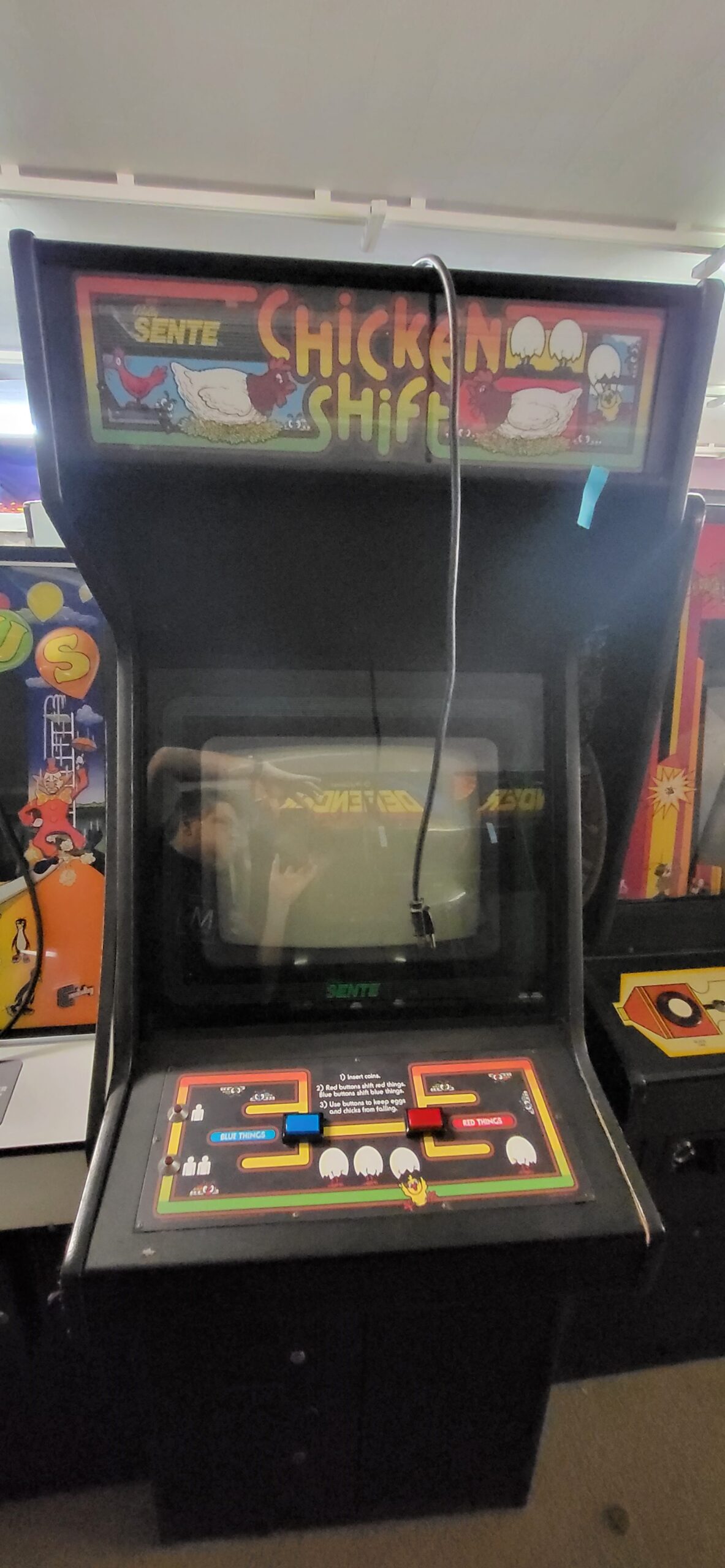
Chicken Shift
Arcade / Bally Sente 1984
Chicken Shift is a classic arcade video game developed by Bally Sente in the 1980s. Known for its quirky and entertaining gameplay, the game features players controlling a farmer who must save his eggs from various predators, including foxes and weasels. The objective is to strategically shift the chicken coop to protect the eggs from being stolen, all while dealing with increasingly challenging levels and faster-moving enemies.
Developed by Bally Sente, Chicken Shift emerged during the golden age of arcade gaming in the mid-1980s. The game’s development aimed to provide a unique and engaging experience within the competitive arcade market. Bally Sente, recognized for innovative titles, successfully combined strategy and reflexes in Chicken Shift, making it stand out among its contemporaries.
Chicken Shift received positive reviews for its addictive gameplay and humorous premise. Players appreciated the combination of strategy and fast-paced action, and the game gained a following for its unique approach to the classic arcade formula. While not a groundbreaking title, Chicken Shift became a beloved part of the arcade gaming landscape.
As an arcade title, Chicken Shift primarily exists in its original cabinet form. The game does not have direct sequels, but its influence can be seen in later games that incorporated similar mechanics of protecting items from oncoming threats. The quirky theme and gameplay style of Chicken Shift have left a lasting impact on the arcade gaming community.
Due to its age and the limited production run typical of arcade games from that era, Chicken Shift cabinets are relatively rare. The exact number of units created is uncertain, contributing to the game’s collector appeal. As with many vintage arcade cabinets, the value of Chicken Shift machines varies based on factors such as condition, rarity, and demand, with well-maintained units often fetching higher prices among collectors.
Chicken Shift runs on Bally Sente’s SAC-I (Single-Board Arcade Computer) hardware. The system features a Zilog Z8002 CPU, coupled with custom sound and graphics hardware. For potential repairs, enthusiasts can refer to the original technical documentation, including schematics and manuals, to troubleshoot and replace faulty components. Common repair items may include the control panel, monitor, and power supply, with replacement parts available through arcade restoration communities and suppliers.


